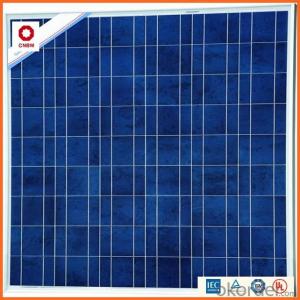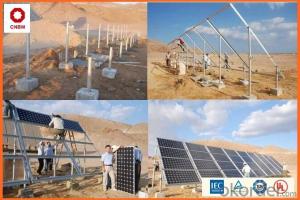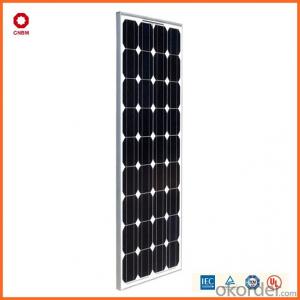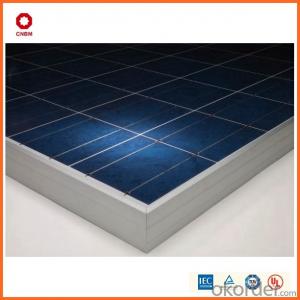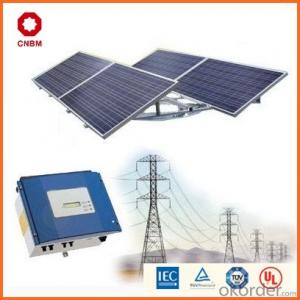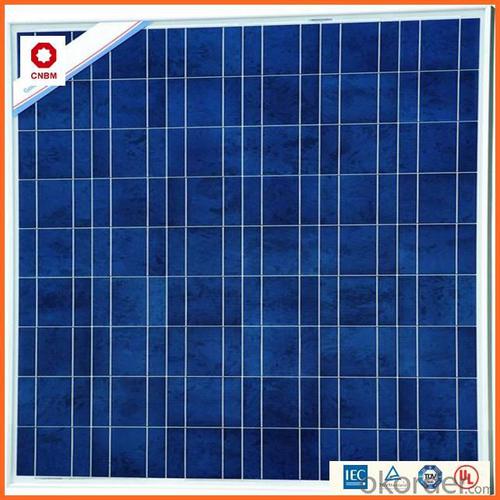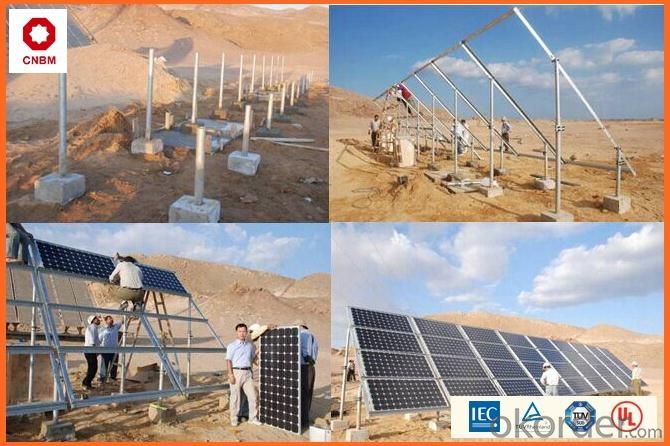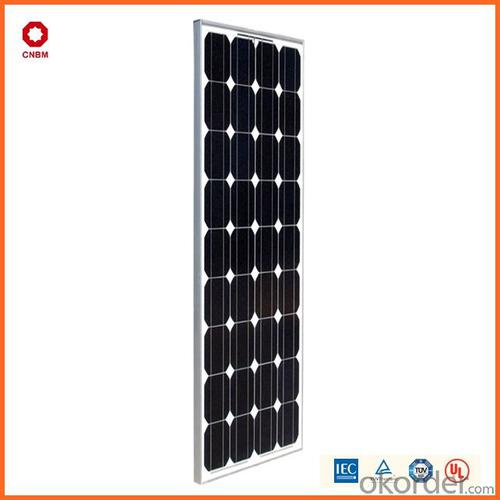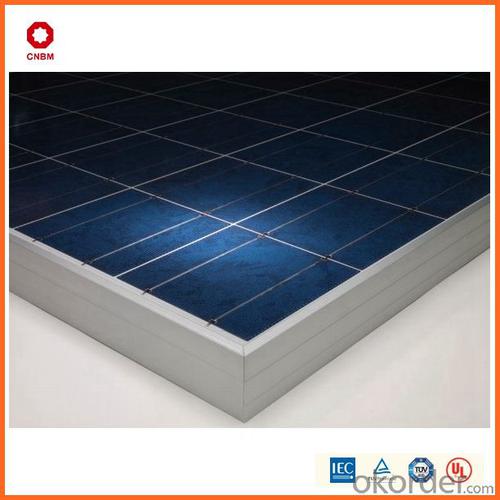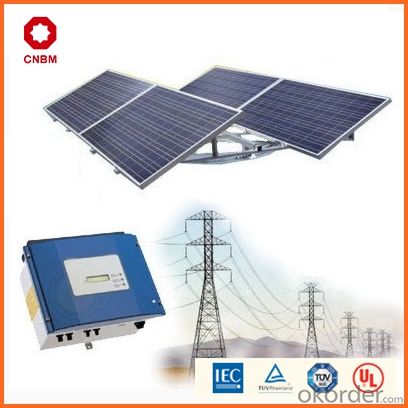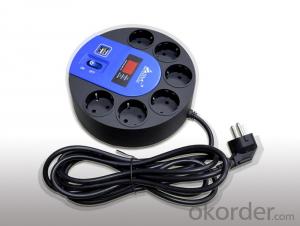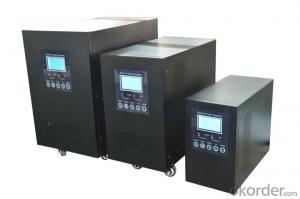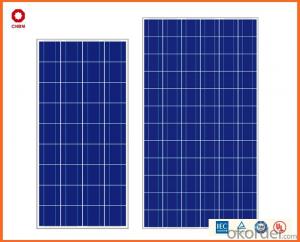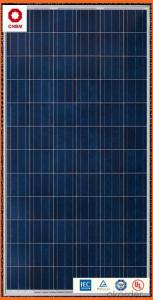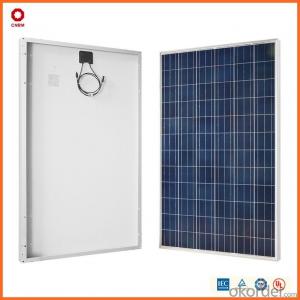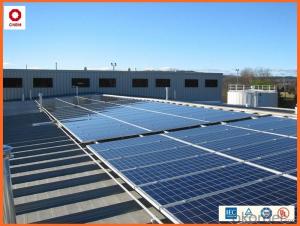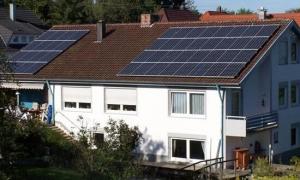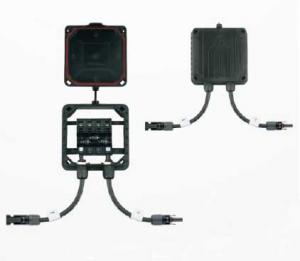General Solar Energy Systems 95w Small Solar Panels in Stock China Manufacturer
- Loading Port:
- China main port
- Payment Terms:
- TT OR LC
- Min Order Qty:
- 1 watt
- Supply Capability:
- 10000000 watt/month
OKorder Service Pledge
OKorder Financial Service
You Might Also Like
Specification
Product Description:
Hot Sale !!! Quality and Safety of Small Poly Solar Panel 5w~150w
1. Rigorous quality control meets the highest international standards.
2. High-transmissivity low-iron tempered glass, strong aluminium frame.
3. Using UV-resistant silicon.
4. IS09001/14001/CE/TUV/UL
Warranties of Small Poly Solar Panel 35~85w
1. 10 years limited product warranty
2. 15 years at 90% of the minimal rated power output
3. 25 years at 80% of the minimal rated power output
Specification
Characteristics of Poly solar panels CNBM (245-320W) | |||||
Max Power Voltage Vmp(V) | 30.3 | 30.8 | 31.1 | 31.4 | 31.85 |
Max Power Current Imp(A) | 7.60 | 7.64 | 7.73 | 7.81 | 7.85 |
Open Circuit Voltage Voc(V) | 36.1 | 36.6 | 37 | 37.3 | 37.68 |
Short Circuit Current Isc(A) | 8.50 | 8.55 | 8.65 | 8.75 | 8.85 |
Max Power Pm(W) | 230W | 235W | 240W | 245W | 250W |
Temperature Coefficient of Cells Poly solar panels CNBM (245-320W) | |
NOCT | 45± 2 |
Temperature Coeffucients of Isc | 0.0492 |
Temperature Coeffucients of Voc | -0.3374 |
Temperature Coeffucients of Voc | -0.4677 |
Mechanical Data of Poly solar panels CNBM (245-320W) | |
Dimension | 1638 × 982 × 40 mm |
Weight | 19.5 kg |
No. of Cells and Connections | 60 (6 ×10) |
Tolerance | 0 ~ + 5 W |
Cell | Monocrystalline Cell 156 × 156 mm |
Packing | 624 Pcs/40ft(H) Container |
Limits of Poly solar panels CNBM (245-320W) | |
Operating Temperature | -40 to +85 |
Storage Temperature | -40 to +85 |
Max System Voltage | 1000VDC(IEC) / 600VDC(UL) |
Features of our products:
• High conversion efficiency mono/poly-crystalline amorphous silicon solar cells
• Modules incorporate high performance bypass diodes to minimize the power drop caused by shading
• High transmittance, low-iron tempered glass
• High performance EVA encapsulant to prevent destroying and water.
• AI frame: without screw, corner connection. 8 holes on the frame can be installed easily
• Good performance of preventing from atrocious weather such as wind and hails
• Certifications: CE IEC TUV VDE UL, Class I
• 10 years 90% power output warranty
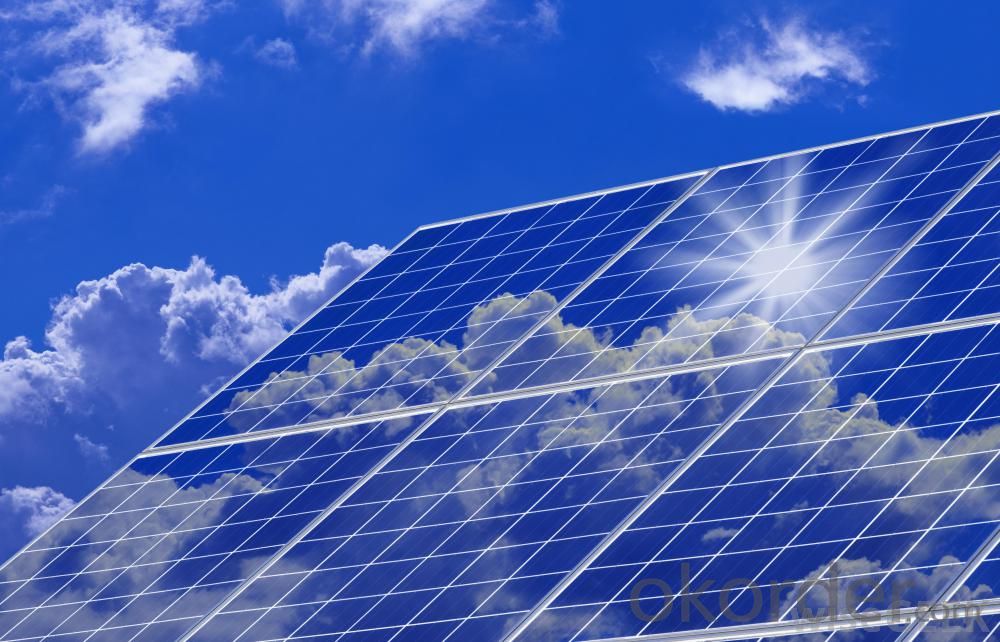
Shipping of Small Poly Solar Panel 35~85w
By Sea | Delivery from Shanghai or Ningbo seaport |
By Air | Departure from Shanghai Pudong Airport |
By Express | Post by DHL, EMS, UPS, TNT. |
Features of our products:
• High conversion efficiency mono/poly-crystalline amorphous silicon solar cells
• Modules incorporate high performance bypass diodes to minimize the power drop caused by shading
• High transmittance, low-iron tempered glass
• High performance EVA encapsulant to prevent destroying and water.
• AI frame: without screw, corner connection. 8 holes on the frame can be installed easily
• Good performance of preventing from atrocious weather such as wind and hails
• Certifications: CE IEC TUV VDE UL, Class I
• 10 years 90% power output warranty
As a professional Solar Panel manufacturer and Supplier in China, we have our customers come around the whole world and our specialization has got a worldwide recognition. Meanwhile, with our superior quality, competitive price, prompt and excellent service, As main role in trade section of CNBM Group, CNBM International Corporation supplies products including Monocrystalline Solar Panel, Polycrystalline Solar Panel ( multicrystalline silicon Solar Panel) have received and enjoyed famous reputation in many countries and regions in the world.
- Q: Can solar energy systems be used for powering electric plane systems?
- Solar energy systems have the ability to power electric plane systems. The concept of using solar power for aviation has gained considerable attention in recent years. In order to capture sunlight and convert it into electricity, solar panels can be installed on the wings and fuselage of an aircraft. This electricity can then be utilized to power various systems on the plane, including navigation, communication, lighting, and auxiliary power units. While it is currently not practical to solely rely on solar power for the main propulsion of a commercial plane due to the limited energy density of solar panels, solar energy can still play a valuable role in reducing overall energy consumption in aircraft. By utilizing solar power for auxiliary systems, electric planes can significantly decrease their dependence on traditional fossil fuel-based power sources. Experimental and small-scale projects have already shown promising results in solar-powered electric planes. For example, Solar Impulse 2, a solar-powered aircraft, successfully completed a round-the-world journey in 2016, highlighting the potential of solar energy in aviation. NASA is also actively exploring the application of solar energy in their electric aircraft research. However, there are still obstacles to overcome in order to fully integrate solar energy systems into commercial aviation. The efficiency and weight of solar panels need to be enhanced to generate sufficient power for larger aircraft. Additionally, advanced energy storage technologies must be developed to store excess solar energy for use during low-sunlight conditions or nighttime flights. Despite these challenges, the potential advantages of utilizing solar energy in aviation are significant. Solar-powered electric planes have the capability to reduce carbon emissions and decrease reliance on fossil fuels, ultimately leading to a more sustainable and environmentally friendly aviation industry. As technology continues to advance, the integration of solar energy systems into electric plane systems will likely become more feasible and widespread.
- Q: How do solar energy systems affect the carbon footprint?
- Solar energy systems have a significant positive impact on reducing carbon footprint. By harnessing the sun's energy to generate electricity, solar systems eliminate the need for fossil fuels, which are major contributors to carbon dioxide emissions. This clean and renewable source of energy not only helps combat climate change but also reduces air pollution and dependency on non-renewable resources.
- Q: How do solar energy systems impact energy security?
- Solar energy systems can greatly enhance energy security by diversifying the energy mix and reducing dependence on traditional fossil fuels. They provide a decentralized and sustainable source of energy, reducing the vulnerability to disruptions in the supply chain and geopolitical tensions. Furthermore, solar energy systems contribute to grid stability and resilience, as they often include energy storage capabilities.
- Q: Can solar energy systems be used in areas with limited access to solar energy insurance coverage?
- Yes, solar energy systems can still be used in areas with limited access to solar energy insurance coverage. While insurance coverage may provide financial protection in case of damage or malfunction, it is not a requirement for the installation and operation of solar energy systems. However, it is advisable to thoroughly assess potential risks and consider alternative risk management strategies in the absence of proper insurance coverage.
- Q: Can solar energy systems be used for street lighting?
- Yes, solar energy systems can be used for street lighting. Solar street lights are becoming increasingly popular as they are more energy-efficient, cost-effective, and environmentally friendly compared to traditional street lights. They rely on solar panels to convert sunlight into electricity, which is then stored in batteries and used to power the street lights during the night. This renewable energy solution reduces reliance on the grid and helps to reduce carbon emissions.
- Q: Can solar energy systems be used in powering printing presses or publishing houses?
- Yes, solar energy systems can be used to power printing presses or publishing houses. Solar panels can generate electricity from sunlight, which can be used to power the various equipment and machinery required in printing or publishing processes. Additionally, solar energy systems can help reduce electricity costs and environmental impact, making them a sustainable and viable option for powering these operations.
- Q: Can solar energy systems be used in powering art galleries or museums?
- Yes, solar energy systems can definitely be used to power art galleries or museums. In fact, utilizing solar power in these establishments can have numerous benefits. Firstly, art galleries and museums often have large spaces with extensive lighting systems, making them energy-intensive. Solar energy systems can provide a significant amount of electricity to power these spaces, reducing reliance on traditional energy sources and lowering operating costs. Moreover, using solar energy aligns with the environmental values often associated with art and culture. By utilizing clean, renewable energy, art galleries and museums can significantly reduce their carbon footprint and contribute to the global efforts in combating climate change. Solar energy systems can also provide a reliable source of power, especially during peak hours when galleries and museums typically experience high visitor footfall. Additionally, the installation of solar panels on the rooftops of these establishments can serve as a visual symbol of their commitment to sustainability and inspire visitors to adopt similar practices in their own lives. However, it is important to note that the feasibility of solar energy systems in art galleries or museums may vary depending on various factors such as the available roof space for solar panel installation, the geographical location, and the specific energy requirements of the establishment. Conducting a thorough assessment and feasibility study is crucial to determine the optimal size and configuration of the solar energy system for each individual gallery or museum. Overall, solar energy systems can provide a clean, renewable, and cost-effective solution for powering art galleries and museums, aligning their operations with sustainable practices while reducing their environmental impact.
- Q: How does the presence of nearby power lines affect the performance of solar panels?
- The presence of nearby power lines can have both positive and negative effects on the performance of solar panels. One of the positive effects is that power lines can provide a stable source of electricity to supplement the solar panels' energy production. During cloudy or low-light periods, when solar panels may not generate enough electricity, power lines can ensure a consistent power supply. This can be especially beneficial for residential or commercial properties that heavily rely on solar energy and cannot afford any interruptions in their power supply. On the other hand, the proximity of power lines can also have some negative impacts on solar panel performance. One significant issue is shading. Power lines often cast shadows on solar panels, which can reduce their overall output. Even a small amount of shading on a solar panel can significantly decrease its efficiency, as it disrupts the flow of photons and reduces the amount of sunlight that can be converted into usable electricity. Furthermore, electromagnetic interference (EMI) can occur when solar panels are placed near power lines. EMI can disrupt the normal functioning of solar panels and interfere with their ability to convert sunlight into electricity. This interference can lead to a decrease in overall energy production and efficiency. It is important to note that the specific impact of nearby power lines on solar panel performance can vary depending on various factors such as the distance between the power lines and solar panels, the angle and orientation of the panels, and the design and quality of the solar panels themselves. To mitigate these potential issues, it is recommended to carefully plan and design the installation of solar panels, taking into consideration the proximity of power lines. This may involve adjusting the angle and orientation of the panels to minimize shading and positioning them in areas where there is minimal electromagnetic interference. Additionally, regular maintenance and cleaning of the solar panels can help optimize their performance, regardless of the presence of nearby power lines.
- Q: Can a solar energy system be installed in areas with high pollution levels?
- Solar energy systems can be installed in areas with high pollution levels. Although pollution can decrease the efficiency of solar panels, it does not entirely hinder their functionality. Even in polluted areas, solar panels can still produce electricity, albeit with slightly lower output compared to cleaner environments. It is important to note that pollution can lead to the accumulation of dust and dirt on the surface of solar panels, further reducing their efficiency. Regular cleaning and maintenance of the panels can help address this issue and ensure optimal performance. Moreover, the installation of solar energy systems in areas with high pollution levels offers additional benefits. By utilizing solar power instead of traditional fossil fuel-based sources, it can contribute to the reduction of overall pollution levels and improve long-term air quality. This can have positive effects on both human health and the environment. In conclusion, although pollution can affect the efficiency of solar energy systems, they can still be installed and generate electricity in areas with high pollution levels. Additionally, the adoption of solar power can aid in pollution reduction and enhance the overall environmental conditions in such areas.
- Q: How much energy can a solar energy system produce?
- The amount of energy a solar energy system can produce depends on various factors such as the size and efficiency of the system, location, weather conditions, and available sunlight. On average, a typical solar energy system can produce anywhere from 1 to 10 kilowatt-hours (kWh) of electricity per day for every installed kilowatt (kW) of solar panels. For example, a 5 kW solar energy system can generate around 5 to 50 kWh of electricity per day, which can be enough to power the average household's energy needs. However, it is important to note that this energy production can vary throughout the year due to seasonal changes in sunlight availability and weather conditions. Moreover, advancements in solar technology and increased efficiency of solar panels have led to significant improvements in energy production. High-performance solar panels and optimized system designs can generate even more electricity, maximizing the energy output of a solar energy system. Additionally, excess energy produced by a solar energy system can be stored in batteries for later use or fed back into the grid, depending on the specific setup and local regulations. This allows for further utilization and optimization of solar energy production. Ultimately, the potential energy production of a solar energy system is a dynamic and customizable aspect that can be tailored to individual energy needs and goals. Consulting with a solar energy professional can provide more accurate estimates and help design a system that best meets specific requirements.
Send your message to us
General Solar Energy Systems 95w Small Solar Panels in Stock China Manufacturer
- Loading Port:
- China main port
- Payment Terms:
- TT OR LC
- Min Order Qty:
- 1 watt
- Supply Capability:
- 10000000 watt/month
OKorder Service Pledge
OKorder Financial Service
Similar products
Hot products
Hot Searches
Related keywords
